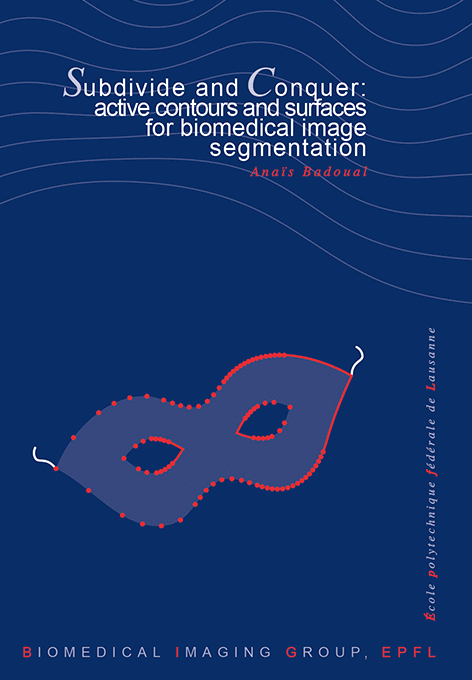Subdivide and Conquer: Active Contours and Surfaces for Biomedical Image Segmentation
A. Badoual
École polytechnique fédérale de Lausanne, EPFL Thesis no. 9326 (2019), 268 p., April 26, 2019.
Ongoing advances in imaging techniques create new demands regarding the analysis of images in medicine and biology. Image segmentation is a key step of many image analysis pipelines and its proper execution is a particularly challenging task. This thesis is dedicated to the development of segmentation algorithms for biomedical structures in 2D and 3D images. In this work, we aim to improve upon classical parametric active contours/surfaces, whose limitations we address.
This thesis is organized in three parts. First, we introduce two representation models. They adapt their resolution to the level of detail of the object to be segmented. We then focus on the formulation of cost functions, called energies, that guide the curve/surface toward the boundary of the target in the image. Among others, we present novel energies based on ridge and texture information. Finally, with these two ingredients in hand, we design new semi-automated active contours/surfaces, also called snakes, for various applications. Our methods are generic enough to be used with a broad variety of data. In particular, we illustrate their performance in segmenting real biomedical images. In addition to those three parts, we provide mathematical tools for signal processing that we designed to efficiently process periodic functions.
To find the optimal curve/surface that best fits a given target, we adopt throughout the thesis a subdivide and conquer strategy. First, we look at several smoothed versions of the original image and, for each, adapt the resolution of the snake curve/surface to the level of detail of the target (i.e., subdivide). Then, we segment the object of interest at each resolution recursively, from the coarsest to the finest image (i.e., conquer). This robust subdivide and conquer strategy exploits the multiresolution property of our curve/surface representations, as well as characteristics of smoothed images (few details and low noise).
Finally, we give a special attention to the conversion of our algorithms into usable software that respect the open-source, user-friendly and reproducibility criteria.

@PHDTHESIS(http://bigwww.epfl.ch/publications/badoual1902.html,
AUTHOR="Badoual, A.",
TITLE="Subdivide and Conquer: {A}ctive Contours and Surfaces for
Biomedical Image Segmentation",
SCHOOL="{\'{E}}cole polytechnique f{\'{e}}d{\'{e}}rale de {L}ausanne
({EPFL})",
YEAR="2019",
type="{EPFL} Thesis no.\ 9326 (2019), 268 p.",
address="",
month="April 26,",
note="")